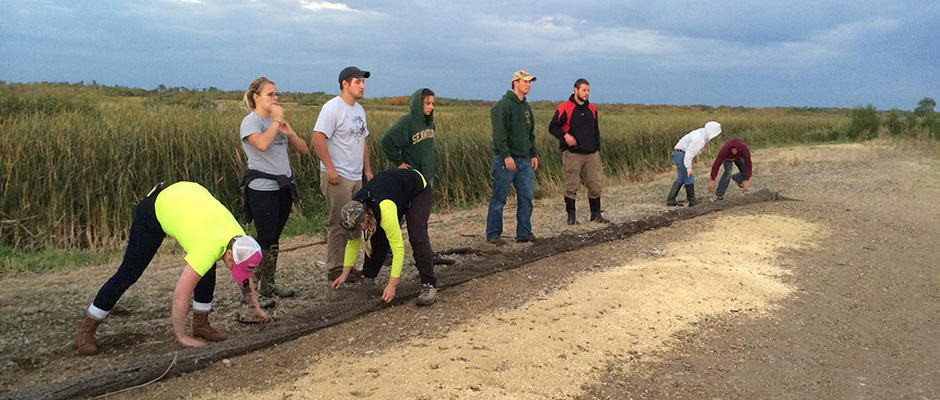Share this article
Member Drives Launch of Wildlife Biology Major at BSU
Bemidji State University, a wooded, lake-side campus, sits amidst mixed deciduous hardwood forests of Minnesota, boreal forest, and prairies and aspen park land, which students take advantage of for snowmobiling, hunting and fishing, making it an ideal location to study wildlife biology.
And with the university’s new wildlife biology program starting in the fall, students will be able to take advantage of this unique location. In addition, while students have had the opportunity to declare an emphasis in wildlife management, this new major in wildlife biology will not only look better on a resume, but will more fully cover topics in wildlife biology and give students a better start in their careers in wildlife biology, according to Brian Hiller, the wildlife specialist in the biology department at BSU as well as a TWS member and adviser for BSU’s student chapter of TWS since he started at the university about three years ago.
“This had been in the works and in the back of my mind for eight years,” said Elizabeth Rave, a biology professor at BSU for 21 years and the driving force behind this new major. “Lots of students come to Bemidji State because they like wildlife and fisheries.”
Rave, also a TWS member, centered the major on TWS’ certification program for wildlife biologists, which is granted for five years and signifies that applicants demonstrate the expertise to represent the profession. For example, the faculty developed courses that match the number of credits people would need for certification requirements. However, they made sure that only certain classes would qualify, Hiller said. “The students have to be thoughtful and careful when choosing their courses,” he said. “When they’re done with the major, we’re hoping it will match up with certification requirements.”
While many of the same courses for the wildlife biology emphasis will be the same for the major, the university added other courses including fish and wildlife ethics, human dimensions of wildlife ethics, and wildlife techniques. These courses take advantage of the area, Hiller said, which is surrounded by 400 lakes within an hour’s drive as well as Native American reservations where students can study how individuals coexist with wildlife. Students will also work within other departments including geography and communications.
Rave and Hiller hope students in the major will take advantage of the Minnesota Department of Natural Resources which has regional offices nearby the university and has already shown excitement about the new program, according to Rave. “Students already take advantage of this,” Hiller said. “The hope is to attract more students by offering the full major.”
Header Image:
Students at Bemidji State University work with Minnesota Department of Natural Resources to put down rocket netting to catch waterfowl in order to band them. A new wildlife biology major has been added in the University, which will look better on students’ resumes and a more thorough education on wildlife biology.
Image Credit: Brian Hiller








